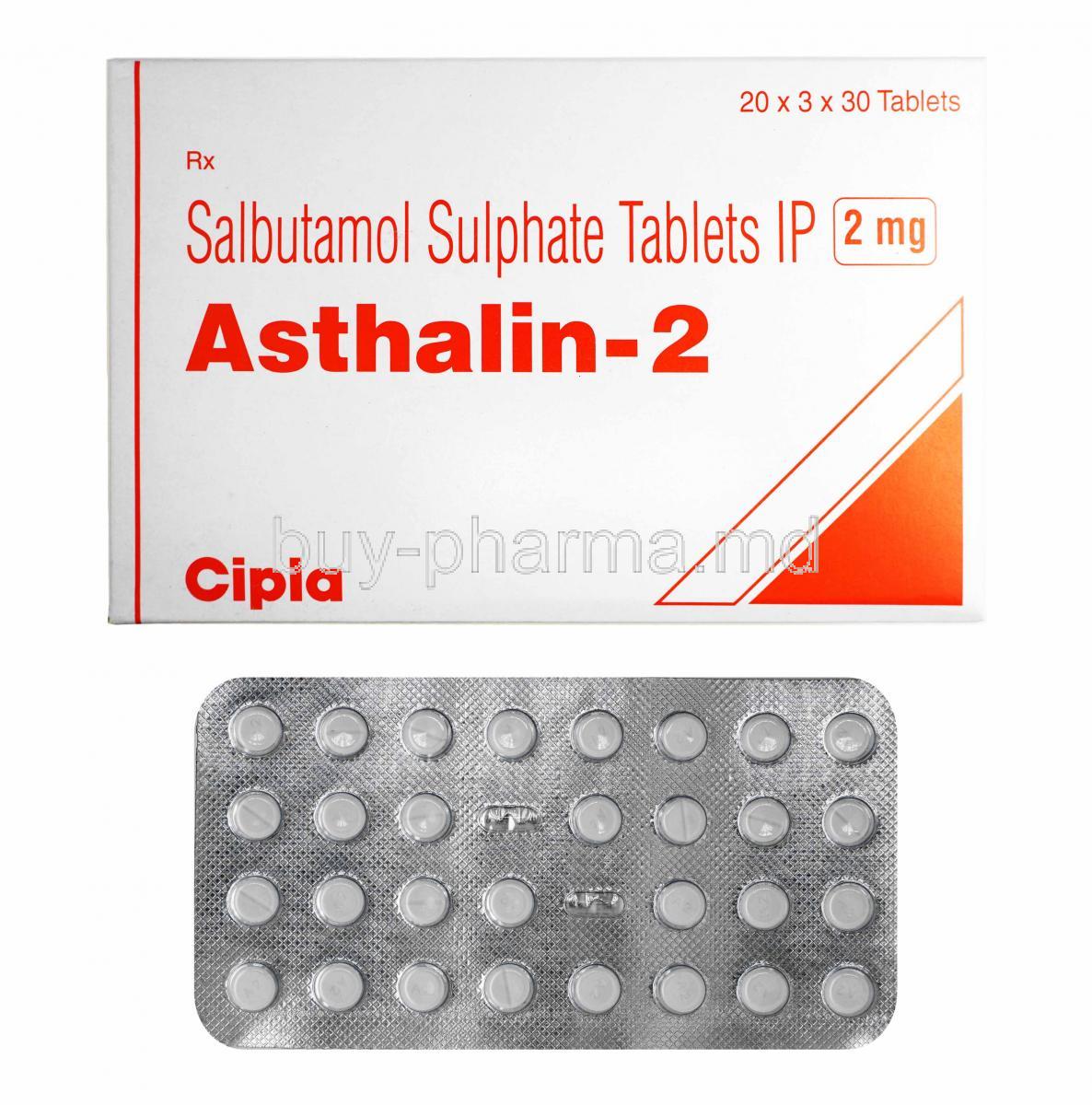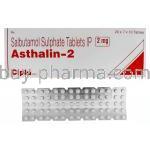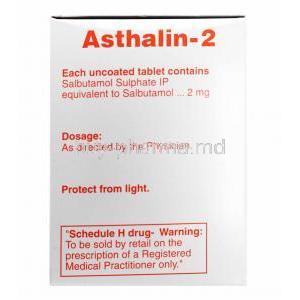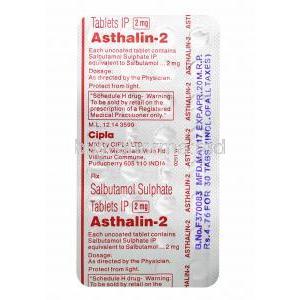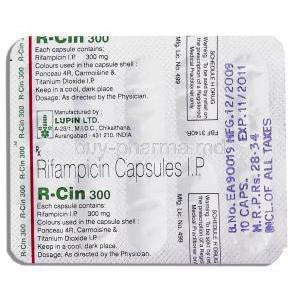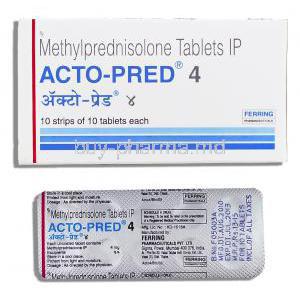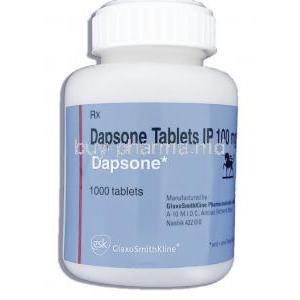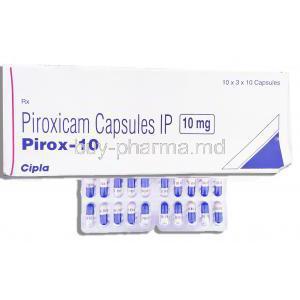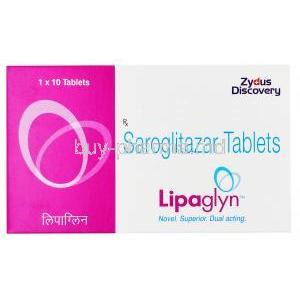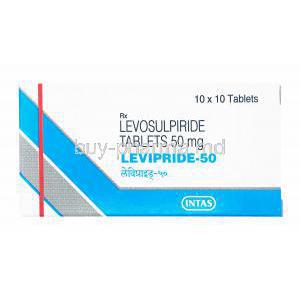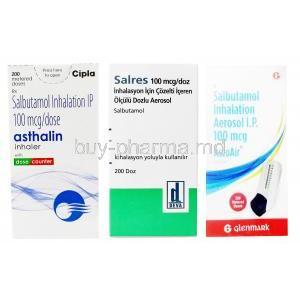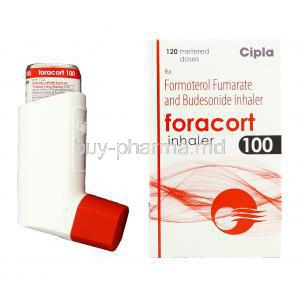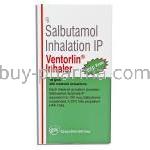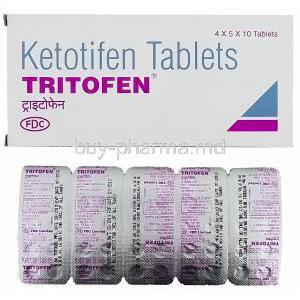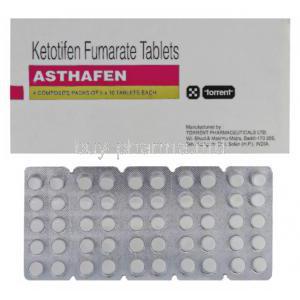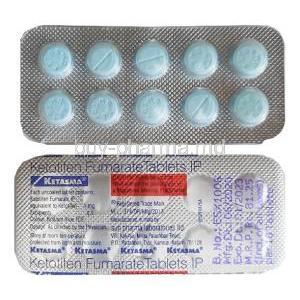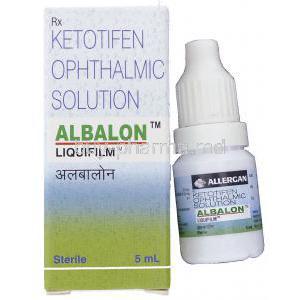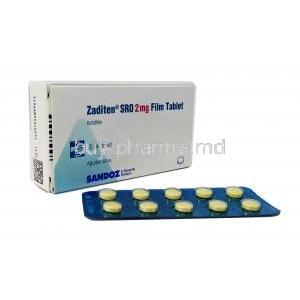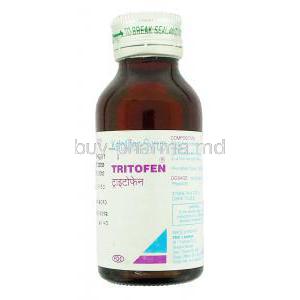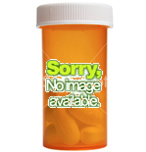Introduction to Asthalin (Salbutamol Tablet)
Overview of Asthalin and Its Therapeutic Role
Asthalin, containing the active ingredient salbutamol, is a widely prescribed medication for the treatment and prevention of respiratory conditions characterized by bronchospasm. It plays a pivotal role in the symptomatic management of obstructive airway disorders such as asthma and chronic obstructive pulmonary disease (COPD). As a fast-acting bronchodilator, it helps to relax constricted bronchial muscles, enabling improved airflow and easier breathing.
Classification: Short-acting β2-adrenergic Receptor Agonist (SABA)
Salbutamol is classified pharmacologically as a short-acting β2-adrenergic receptor agonist (SABA). This category of medications exerts selective stimulation of β2 receptors in the bronchial smooth muscle, producing rapid bronchodilation and symptomatic relief.
Differences Between Tablet, Inhaler, and Syrup Formulations
- **Tablet**: Offers systemic action with prolonged duration but slower onset. - **Inhaler**: Preferred for acute relief due to immediate local action in the lungs. - **Syrup**: Common in pediatric patients and those with swallowing difficulties. Each formulation is tailored for specific clinical scenarios, balancing onset, duration, and route of delivery.
Overview of Regulatory Approvals and Global Usage
Asthalin tablets are approved by various national health authorities and are included in treatment protocols for asthma and COPD globally. They are listed on the WHO Model List of Essential Medicines, signifying their established efficacy and critical importance in public health.
Active Ingredient and Composition
Salbutamol: Pharmacological Class and Mechanism
Salbutamol is a synthetic sympathomimetic amine that selectively targets β2-adrenergic receptors. Its primary mechanism involves cyclic AMP-mediated relaxation of bronchial smooth muscles, thereby alleviating airflow restriction.
Available Strengths and Excipients in Asthalin Tablets
- Typical strengths: 2 mg and 4 mg tablets - Common excipients: Lactose monohydrate, maize starch, magnesium stearate, and microcrystalline cellulose These inactive components ensure tablet stability, absorption, and shelf-life.
Bioavailability and Formulation-Specific Absorption
Orally administered salbutamol has an approximate bioavailability of 50%, owing to first-pass hepatic metabolism. The systemic effect is beneficial in preventing nocturnal and exercise-induced bronchospasm, offering broader coverage than inhaled variants.
Mechanism of Action: How Asthalin (Salbutamol) Works
Binding to β2-adrenergic Receptors in Bronchial Smooth Muscle
Salbutamol activates β2-adrenergic receptors located on bronchial smooth muscle cells. This interaction stimulates adenylate cyclase, increasing intracellular cAMP levels and triggering muscle relaxation.
Bronchodilation and Relief of Airway Obstruction
The resultant bronchodilation leads to: - Reduced airway resistance - Enhanced airflow - Alleviation of wheezing, coughing, and shortness of breath
Onset of Action and Duration of Effect for Oral Tablet Form
- **Onset**: Typically within 30 minutes - **Peak effect**: 2–3 hours post-ingestion - **Duration**: 4 to 6 hours This makes the tablet suitable for scheduled dosing rather than acute rescue.
Approved Medical Uses of Asthalin Tablet
Treatment of Bronchial Asthma (Acute and Chronic)
Asthalin tablets are indicated for the relief and prevention of asthma attacks, especially in patients unable to use inhalers effectively. It helps manage both acute exacerbations and chronic symptoms.
Relief of Reversible Airway Obstruction in Chronic Bronchitis
In chronic bronchitis, characterized by persistent cough and mucus production, Asthalin assists in dilating narrowed bronchi, improving breathing comfort.
Management of Chronic Obstructive Pulmonary Disease (COPD)
For COPD patients, salbutamol reduces episodic breathlessness and enhances exercise tolerance by mitigating airflow limitation.
Prevention of Exercise-Induced Bronchospasm
Prophylactic use of Asthalin tablets prior to physical activity can help prevent bronchospasm in individuals with exercise-induced asthma.
Off-Label and Experimental Uses of Salbutamol Tablets
Use in Hyperkalemia Management
Salbutamol facilitates the intracellular shift of potassium, making it a valuable adjunct in emergency hyperkalemia treatment when used alongside insulin and glucose.
Potential Off-label Application in Preterm Labor (Tocolytic)
Though not routinely used, salbutamol may act as a uterine relaxant to delay premature labor by suppressing smooth muscle contractions in the uterus.
Research Use in Muscle-Wasting Diseases and ALS
Preliminary research has investigated its anabolic effects on skeletal muscle, offering theoretical potential in conditions like amyotrophic lateral sclerosis (ALS).
Consideration in Cystic Fibrosis or Other Rare Pulmonary Disorders
Asthalin’s bronchodilatory action may provide symptomatic benefit in cystic fibrosis or rare interstitial lung diseases where airway obstruction is present.
Dosage and Administration Guidelines
Standard Dosing for Adults and Adolescents
- Usual dose: 2–4 mg three or four times daily - Maximum: 8 mg per dose in severe cases (under medical supervision)
Pediatric Dosage Recommendations
- Children 2–6 years: 1–2 mg three to four times daily - Children 6–12 years: 2 mg three to four times daily
Frequency and Timing of Administration
Administer at evenly spaced intervals, preferably before meals. Avoid late evening dosing to prevent insomnia.
Adjustments Based on Severity and Response
Dose modifications are guided by patient response, tolerance, and comorbid conditions such as hypertension or arrhythmias.
Missed Dose Protocol and Overdose Symptoms
- **Missed dose**: Take as soon as remembered, skip if close to the next dose - **Overdose signs**: Tachycardia, tremors, hypokalemia, insomnia, metabolic acidosis Immediate medical attention is warranted in overdose scenarios.
Administration in Special Populations
7.1 Use in Elderly Patients
- Start at lower end of dosage range - Monitor for cardiac effects and renal clearance - Consider comorbidities like atrial fibrillation or hypertension
7.2 Use in Pregnant Women and Nursing Mothers
- FDA Category C: Use only if benefits outweigh risks - Minimal placental transfer observed, but caution advised - Excreted in breast milk; infant monitoring recommended
7.3 Use in Pediatric Patients
- Suitable in children over 2 years with appropriate dose adjustments - Long-term use requires growth monitoring due to potential systemic effects - Syrup formulation may be preferable for younger children
Common and Serious Side Effects of Asthalin
8.1 Common Side Effects
Asthalin, like other β2-agonists, may elicit certain predictable and often mild adverse effects due to systemic sympathetic stimulation. Common side effects include: - **Tremors**: Fine muscle tremors, especially of the hands, are among the most frequently reported and are dose-dependent. - **Headache**: Often transient and relieved without intervention. - **Palpitations**: Patients may report awareness of an increased heart rate or pounding heartbeat, especially shortly after dosing. - **Nervousness or Restlessness**: Mild central nervous system stimulation may lead to anxiety, agitation, or sleep disturbances. - **Gastrointestinal Upset**: Nausea, vomiting, and occasional abdominal discomfort can occur, particularly at higher doses. - **Muscle Cramps**: Electrolyte shifts, particularly involving potassium, may contribute to sporadic muscle spasms or cramps.
8.2 Serious Adverse Reactions
Though infrequent, some patients may experience clinically significant reactions requiring prompt medical attention: - **Tachyarrhythmias and Myocardial Ischemia**: High doses or sensitivity in predisposed individuals can precipitate rapid heart rhythms or reduce myocardial oxygen supply, increasing the risk of angina or infarction. - **Paradoxical Bronchospasm**: A rare but critical reaction where airway narrowing worsens rather than improves, often necessitating immediate cessation of therapy. - **Hypokalemia and Metabolic Disturbances**: Intracellular potassium shifts may lead to dangerous reductions in serum potassium levels, increasing the risk of muscle weakness, arrhythmias, and metabolic acidosis.
Drug Interactions and Contraindications
9.1 Drug-Drug Interactions
Asthalin may interact adversely with various classes of medications, altering therapeutic efficacy or increasing the risk of side effects. - **Beta-blockers (e.g., Propranolol)**: These antagonize the bronchodilatory effect of salbutamol and may exacerbate bronchospasm, especially non-selective beta-blockers. - **Diuretics and Digoxin**: Potassium-wasting diuretics (e.g., furosemide) may compound salbutamol-induced hypokalemia, raising digoxin toxicity risk. - **Monoamine Oxidase Inhibitors (MAOIs) and Tricyclic Antidepressants**: These agents may potentiate cardiovascular effects, such as increased blood pressure or heart rate, when used concomitantly with salbutamol.
9.2 Contraindications
Asthalin should not be used under the following conditions: - **Known Hypersensitivity**: Documented allergy to salbutamol or any tablet excipient precludes its use. - **History of Paradoxical Bronchospasm from β2-Agonists**: Recurrence can be life-threatening. - **Significant Cardiovascular Disorders**: Conditions such as arrhythmias, ischemic heart disease, or hypertrophic cardiomyopathy warrant exclusion due to potential cardiac stimulation.
Important Warnings and Precautionary Statements
10. Important Warnings and Precautionary Statements
- **Cardiac Complications**: Elevated dosages may induce arrhythmias or worsen pre-existing cardiac conditions. - **Seizure Disorders, Hyperthyroidism, and Diabetes Mellitus**: Use with caution; salbutamol may lower seizure threshold, intensify thyrotoxic symptoms, or influence glucose regulation. - **Long-Term Use**: Chronic administration should be regularly reviewed. Tachyphylaxis, inappropriate reliance on short-acting bronchodilators, or masking of deteriorating disease should be avoided.
Guidelines for Careful Administration
11. Guidelines for Careful Administration
- **Titrating Dose in Renal or Hepatic Impairment**: Reduced metabolic clearance in compromised organs necessitates dose adjustments to prevent accumulation and toxicity. - **Avoiding Abrupt Withdrawal**: Gradual tapering is recommended, especially in patients on prolonged high-dose therapy. - **Periodic Reassessment**: Regular clinical evaluations are crucial to assess ongoing necessity, response, and the emergence of side effects or disease progression.
Storage and Handling Instructions
12. Storage and Handling Instructions
- **Storage Temperature and Humidity**: Keep Asthalin tablets in a cool, dry place, ideally at 20–25°C (68–77°F). Avoid excessive heat and humidity. - **Protection from Light and Moisture**: Store in a tightly closed container away from direct sunlight and damp environments. - **Disposal**: Expired or unused medication should be discarded in accordance with local pharmaceutical waste protocols, not via household drains or trash.
Overdose Management and Emergency Intervention
13. Overdose Management and Emergency Intervention
- **Signs of Overdose**: - Hypotension - Tachycardia - Fine tremors - Hypokalemia - Agitation or chest discomfort - **Emergency Treatment Protocols**: - Administration of cardio-selective beta-blockers in non-asthmatic individuals (with extreme caution) - Continuous ECG and serum electrolyte monitoring - Intravenous fluids and correction of acid-base balance as needed - **Poison Control and Hospitalization**: - Immediate contact with poison control centers is recommended in suspected overdose. - In severe cases, intensive care admission may be warranted for hemodynamic stabilization.
Handling Precautions and Patient Education
14. Handling Precautions and Patient Education
- **Safe Storage**: Keep out of reach of children and pets. Use child-proof containers where available. - **Proper Use and Adherence**: - Instruct patients to take the medication exactly as prescribed. - Emphasize not to exceed the recommended dosage. - Encourage the use of a symptom diary to monitor treatment response. - **Do Not Share Medication**: Salbutamol is a prescription drug tailored to individual clinical profiles. Sharing may lead to misuse or adverse effects in others.

